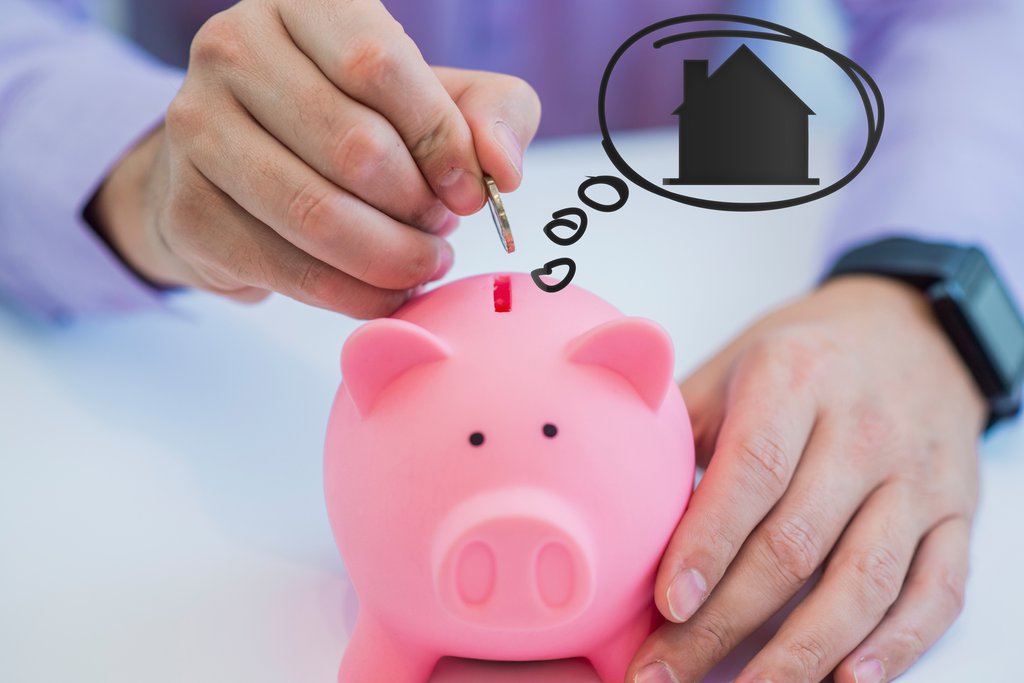Fastest Ways to save for a Down Payment

If you have made the decision to buy a house, then one of the first steps is to gather the funds required for the down payment. In Canada, the amount of this down payment varies depending on the purchase price of the home.
For a purchase price under $500,000, a buyer has to put at least 5% down. From $501,000 to $999,999, the buyer has to place 5% down on the first $500,000 and then 10% on any amount of the purchase price that is over and above $500,000. For example, on a $750,000 home, the prospective home buyer has to save up (5% x $500,000 + 10% x $250,000) = $50,000. For any instance that a borrower does not put at least 20% down for the purchase of a residential property, they must have a good credit score, a strong credit history, and income that is strong enough for the homebuyer to be able to qualify for mortgage default insurance. Lastly, for any home that is a million dollars or more, a 20% down payment is the minimum amount required to obtain a mortgage.
As can be seen above, this can add up to quite a large sum that only increases at a steeper rate as the purchase price of homes in Toronto and other parts of Canada grows increasingly higher as time goes by. While it may seem like you need to save up an overwhelming amount to have enough for a down payment, thousands of Canadians become homeowners every year. If you have your sights set on joining that crowd, then this article may be able to help you get there quicker!
These are two of the more common ways of getting together the money required to save up enough to put towards a new home or investment property: (i) increase your inflows, income, and cashflow, and/or (ii) decrease your outflows and expenses.
Increasing Inflow
There are a few ways to increase disposable income. However, these may or may not be feasible depending on the time constraints and priorities of the future homebuyer. Below are some of the ways that total income can be enhanced.
- (i) Freelancing: In the digital age, freelancing is a legitimate, potentially lucrative option that has provided some people with full-time careers. With sites such as Upwork, Fiverr, you can register your profile and offer a unique, in-demand service that can be marketed and delivered online. Whether your strengths lie in coding, graphic design, writing, or other types of work, this could be worth exploring as a side gig to bolster your main income or even as your primary job! Uber and Lyft are other popular options to help supplement income.
- (ii) Part-time job: For people who are willing and able to spend a few hours before or after their primary job, a second, part-time job may be an option. This is not just limited to retail or customer service. A lot of people today get paid online for services such as data entry, product and software testing and/or virtual assistantship. If this sounds like something you would enjoy, it may be an option to help accelerate your journey to reaching your down payment goal.
- (iii) Overtime: If you work at a job that pays extra for overtime, weekends or statutory holidays, you could try asking your manager to slot you in for those extra spots. A short-term sacrifice here could be a long-term gain.
- (iv) Investing: If you are someone who follows the markets on a frequent basis or even has foundational knowledge of investing, then the value of compounding gains has time and time again proven to increase wealth. If you are a novice investor, however, then it might be worth chatting with a financial advisor or placing your money in low-cost ETFs or low-risk mutual funds instead of actively trying to pick and speculate on stocks.
- (v) You can also have the down payment gifted to you by an immediate family member such as a parent or sibling, should you be fortunate enough to have one of those family members able and willing to help you out.
Bonus tip: Research and take advantage of First Time Homebuyers’ Programs. These are exclusively made to redevelop some parts of the city or to enable buyers to afford homes in expensive cities such as Toronto, Mississauga, Aurora, Vaughan, Newmarket, Burlington, Oakville, Scarborough, Pickering, Ajax, Oshawa, Hamilton, Niagara Falls, St. Catharines, Kitchener, Waterloo, Guelph, London, and other major cities across Ontario. If your city or province offers such a program, it could very well be worth it to get interest-free, low-interest or equity share loans (depending on the program structure in your city or region).
Decreasing Outflow and Expenses
While increasing income and other forms of cash inflows can often be the faster way to reach your financial goals, decreasing expenses and other types of cash outflows can go a long way towards helping you save up a larger down payment. With a few simple changes to your spending habits and/or lifestyle, you could suddenly find yourself in a much more comfortable financial situation in no time! Some ways to do so are listed below:
- (i) Pay off your credit cards: Amongst the most expensive debts you can have is your credit card debt, which can be as high as 23%. That means that on a $10,000 bill, you could pay $2,300 just in interest over the course of a year!
- (ii) Walk or commute: Thinking of buying a new car? You might want to hold off just a little longer. If possible, try walking to work or commuting. The lease or financing costs, gas costs, parking, and insurance all add up! Bonus: By walking to where you need to go you can also get fitter.
- (iii) Reduce expensive habits: If you enjoy costly vacations or dinners at fancy restaurants, consider holding off on those for a few months. $70 for saved on a dinner may not sound like much, but even if that happens 10 times in a month, it adds up to $700 a month or $8,400 a year.
- (iv) Debt consolidation loans: If you have multiple different types of debt, a debt consolidation loan provides a lump sum in the form of one lower interest loan to help pay off the higher interest debt you may currently have. This is used to pay off all the smaller debts that may carry higher interest rates than the debt consolidation loan might come with and replaces all those smaller debt with a larger debt at a better rate. The borrower then pays back the consolidation loan debt over time. More often than not, the interest rate on this large debt is lower than the average of the smaller debts, meaning that the borrower is saving on interest costs every month.
Saving for a down payment may seem like an uphill battle, but keeping a tighter wallet (at least in the short term) or finding new streams of income can help ease this burden substantially. While this may require practice and discipline (and maybe a few late nights if you choose the overtime/freelancing route), your journey to buying a home can be that much closer to completion. Temporary sacrifice for long term gain might be the answer you’ve been looking for.





